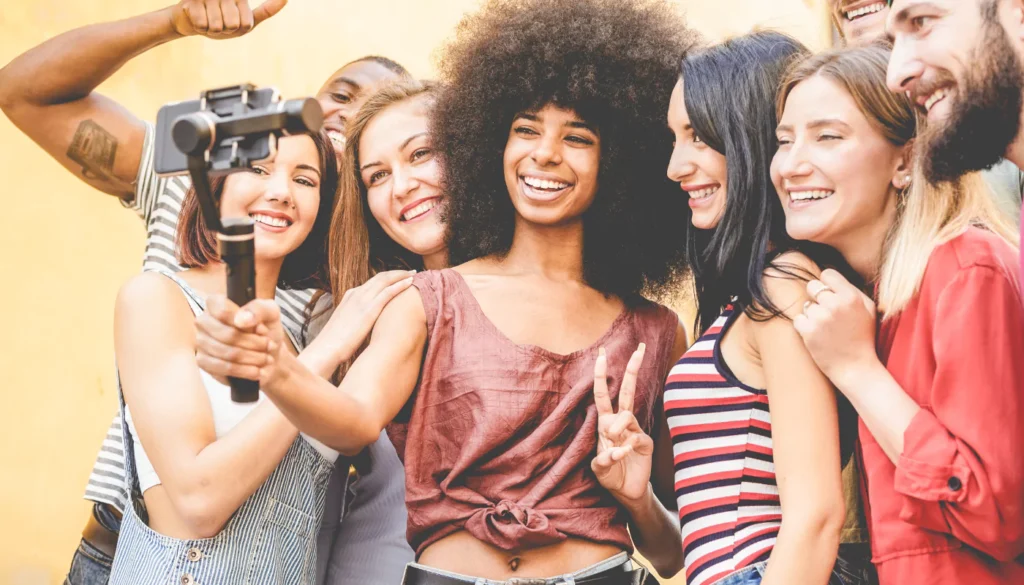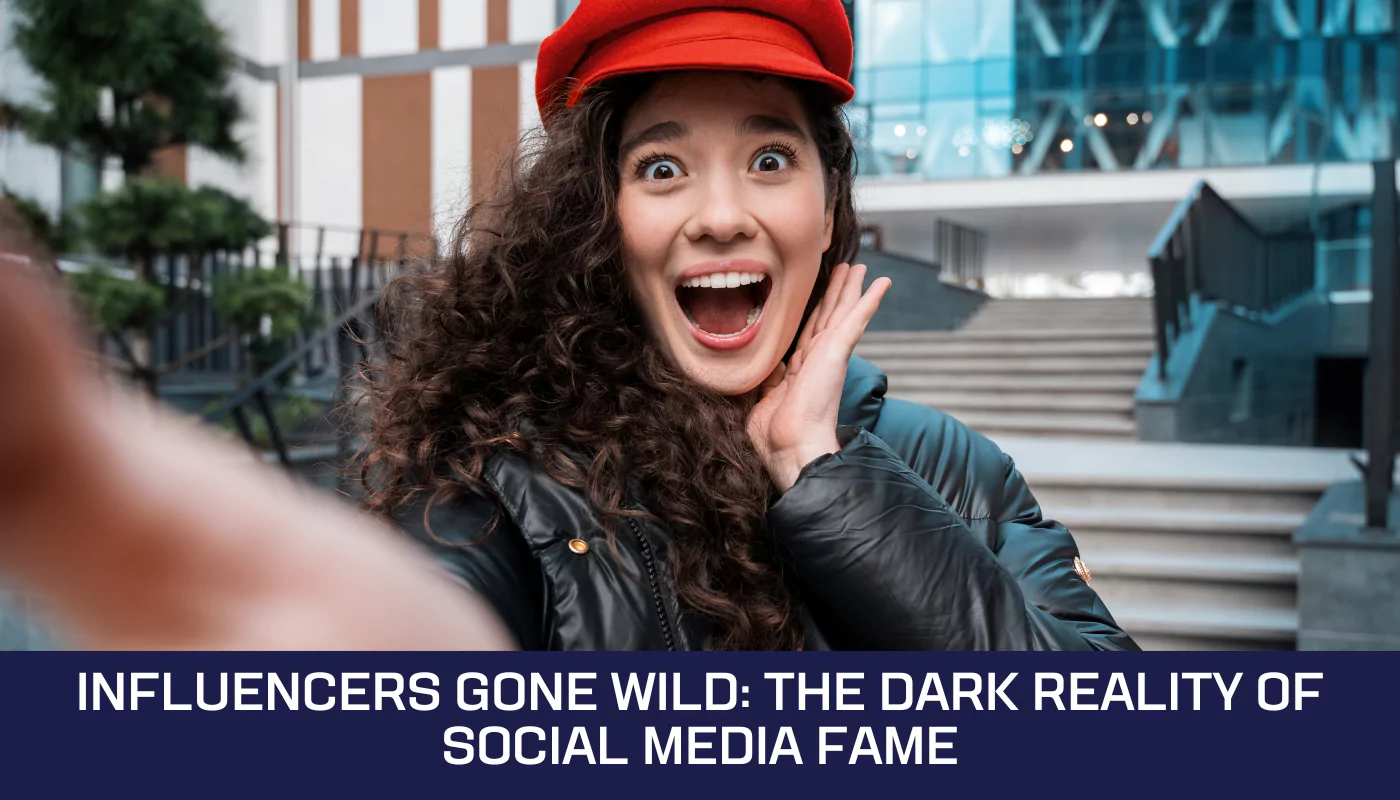Social media can be a wild place. Sometimes, influencers do crazy things to get noticed. They might go too far, making us ask: what’s happening? This is about “Influencers Gone Wild.”.
One fact is that these wild actions aim to grab our attention. This blog will look at why influencers act this way and how it changes social media. We’ll explore the good, the bad, and the shocking side of being an influencer.
Keep reading to find out more!
The Rise of Influencers on Social Media

Influencers on social media have become big stars. They shape trends and sell products by just posting online.
Defining Influencers and Their Role
Influencers are people who have built a large following on social media. They use their online influence to change how we think about buying things. There are three types of influencers based on the number of followers they have.
Macro influencers have over 100,000 followers. Micro influencers have between 1,000 and 100,000 followers. Nano influencers have fewer than 1,000 followers.
These social media stars play a big role in digital marketing and viral trends. They can make us want to buy products or try new brands just by talking about them online. This power changes how companies talk to their customers.
Influencers significantly impact consumer purchasing decisions and brand communications.
Popular Platforms for Influencer Activity
Instagram, TikTok, and YouTube are key platforms for influencers. Instagram focuses on video content and visual appeal. It is great for brand collaboration and sponsored posts. TikTok thrives on user-generated content.
This platform allows creators to showcase their talent in fun ways. YouTube helps build a strong community with audience engagement. Influencers use it to share longer videos and connect deeply with followers.
These platforms shape the influencer marketing landscape today, helping digital marketers reach more people effectively.
The Phenomenon of “Gone Wild” Among Influencers
Some influencers take risks to get attention. They often engage in shocking behavior that can leave many people stunned.
Exploring the Phrase “Gone Wild”
Influencers Gone Wild” shows a trend among content creators. They often engage in extreme or controversial actions for attention. This behavior is linked to wanting fame and experiencing FOMO, or the fear of missing out.
Notable incidents highlight how some influencers lose control, pushing boundaries for views and likes.
The results can be severe. Statistics show that 78% of followers lose trust after controversies arise. In fact, 65% of influencers see fewer career opportunities following these scandals.
Attention-seeking leads to risky choices that can hurt their personal brand and future prospects in the industry.
Notable Incidents of Influencers Losing Control
Influencers can sometimes act without thinking. This can lead to serious problems.
- Logan Paul faced backlash after filming a controversial vlog in Japan. He filmed in a forest known for suicides. Many viewers were shocked and upset by his lack of sensitivity.
- Kylie Jenner gained fame by showcasing her lavish lifestyle. She often shared pictures of expensive trips and luxury items. Her posts attracted many endorsements, but some people criticized her for being out of touch with reality.
- James Charles experienced big reputation issues during the “Tati” drama. A disagreement with fellow influencer Tati Westbrook led to major fallout online. Many fans turned against him, hurting his brand and follower count.
- David Dobrik is known for his stunt videos that go viral quickly. While he grew his follower base, some stunts raised eyebrows and sparked controversy. His actions left them questioning the safety and ethics of such content.
- These incidents hurt influencers’ reputations significantly. Scandals can lead to lost deals with brands and less trust from followers.
- Mental stress comes from public criticism too. FOMO (fear of missing out) adds pressure to keep up appearances on social media platforms.
Each incident shows how quickly things can spiral out of control for influencers in social media.
Consequences of Reckless Behavior
Reckless actions can hurt an influencer’s brand and image. Scandals may also end careers and create lasting damage.
Effects on Personal Brand and Reputation
Reckless actions can hurt an influencer’s personal brand and reputation. A shocking 78% of followers lose trust in influencers after controversies. This loss of trust leads to serious consequences.
Influencers often face a decline in career opportunities post-controversy, with about 65% experiencing this downfall.
Trust erosion with followers can damage long-term success. Scandals may also lead to ethical and legal dilemmas, such as the obligation to disclose sponsored content or avoiding unauthorized use of materials.
These issues can worsen their image and chances for future work. The impact goes beyond just social media; it shapes their entire career path, forcing them to confront both public scrutiny and potential legal penalties.
Next, we will look at the psychological effects on influencers themselves.
Career Implications of Scandals
Scandals can hurt an influencer’s career. About 65% of influencers face fewer job opportunities after a controversy. Followers often lose trust too; 78% say they distrust influencers involved in scandals.
This loss of trust can lead to a decline in followers and engagement.
Legal issues also arise from scandals. Influencers must disclose sponsored content properly. They should avoid using copyrighted material without permission. Failing to follow these rules can result in penalties and damage their professional image.
These risks show the serious impact that reckless behavior can have on an influencer’s success.
Psychological Effects on Influencers
Social media can be tough on influencers. They often feel pressure to keep up with trends and gain attention, which leads to stress and burnout.
The Impact of FOMO
FOMO, or fear of missing out, drives many influencers. They want attention and feel pressure to stay popular. This constant need for engagement can lead to reckless behavior. Influencers often rush into trends to avoid being left behind.
Rapid fame brings intense scrutiny. Many influencers struggle with mental health due to this added stress. They may face harsh criticism online and offline. Coping strategies are essential for their well-being.
Mindfulness, strong support systems, and mental health resources help them manage the pressure effectively.
Coping with Public Criticism and Mental Stress
Public criticism can hit hard. Influencers often face negative feedback from followers and the media. This pressure can lead to mental stress. To cope, influencers use various strategies.
Mindfulness helps them stay calm. Support systems are vital too. Friends, family, and online communities offer comfort and advice.
Many influencers join peer support networks or online forums. They connect with others who understand their struggles. Workshops also provide tools to handle stress better. Collaboration with mental health professionals is key for some as well.
Advocacy for more research on these coping methods is growing in importance. The focus should be on promoting authenticity and well-being among all social media users.
Conclusion
Influencers have changed social media. They can build strong brands but also face risks. Wild actions often lead to controversy and backlash. These behaviors affect their careers and mental health.
It’s essential for influencers to find balance and act responsibly in their online presence.
For more insights, explore resources on digital ethics and influencer marketing strategies. Stay informed about the pressures of being an influencer today. Keep in mind, fame should not come at the cost of your values or well-being.
Engage with your audience positively and thoughtfully!
FAQs
-
What is the dark side of social media influencers?
The dark side of social media influencers includes issues like fake lifestyles, misleading promotions, and negative impacts on mental health. These problems can affect both followers and brands.
-
How do influencers create unrealistic expectations?
Influencers often share edited photos and highlight only their best moments. This can lead followers to compare themselves unfairly, creating feelings of inadequacy or low self-esteem.
-
Are there risks for brands working with influencers?
Yes, brands face risks when collaborating with influencers who may promote false information or behave irresponsibly online. This can harm a brand’s reputation if the influencer acts inappropriately.
-
How can followers protect themselves from harmful content?
Followers should critically evaluate what they see online. They should seek diverse perspectives and remember that not everything shared by influencers reflects reality or promotes healthy choices.

